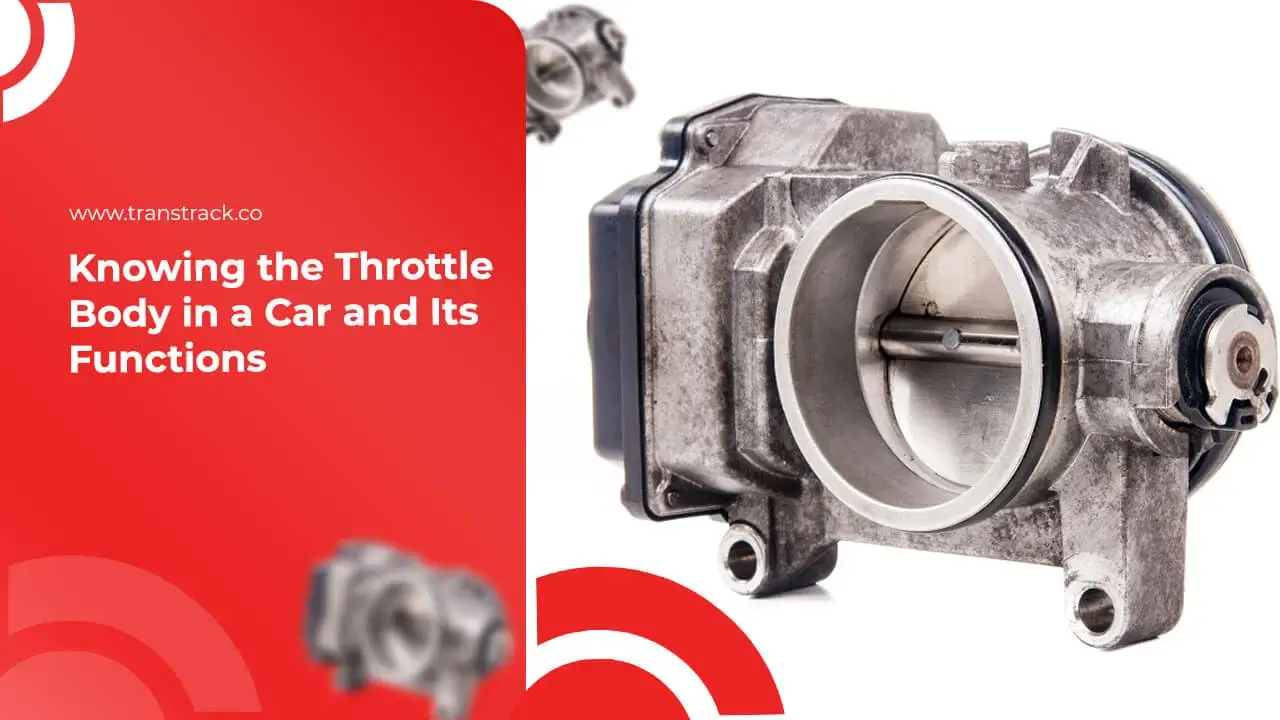Knowing the Car Throttle Body and Its Functions

Do you know that the throttle body is one of the key components that affect the performance of your car engine? In this increasingly sophisticated world, this component is often forgotten when performing vehicle maintenance. However, a deep understanding of the throttle body can make a huge difference in your driving experience.
The throttle body, often considered the “heart” of a modern car’s combustion system, is responsible for regulating airflow to the engine. It’s not just about making sure your vehicle runs, but also about how the engine performs as a whole. From responsive acceleration to optimal fuel efficiency, the throttle body plays a very important role.
In this article TransTRACK , we will explore more about the throttle body: how it works, why it’s important, and how you can take good care of it to keep your car performing at its best. Ready to uncover the mystery behind the “brain” of your vehicle? Let’s start learning more about your car’s throttle body.
What is a Throttle Body?
A throttle body is a component in the fuel system of a motor vehicle that regulates the amount of air entering the engine. It is an important part of the engine control system that ensures the balance between air and fuel needed for the engine to operate properly.
The throttle body is usually located between the air line and the engine intake manifold. When the driver steps on the gas pedal, the throttle body opens its doors to allow more air into the engine. Conversely, when the gas pedal is released, the throttle body closes to reduce airflow. In this way, the throttle body helps control engine speed and ensures optimal performance under various operating conditions.
Some throttle bodies are equipped with a potentiometer or throttle position sensor (TPS) that measures how far the throttle body is open, so this information can be used by the engine control unit to regulate fuel burn and overall engine performance.
What are the Functions of the Throttle Body?
Throttle body functions include:
Controls the air flow in the engine
The throttle body regulates the amount of air entering the engine as needed when the driver steps on or releases the gas pedal. This is important to create the optimal air and fuel mixture for combustion in the combustion chamber.
Controls the speed of the car engine
By regulating airflow, the throttle body also helps control engine speed or revolutions per minute (RPM). When the gas pedal is pressed, the throttle body opens its doors to increase airflow and increase engine speed, and vice versa.
As fuel efficiency
By controlling airflow, the throttle body helps to create efficient combustion conditions, which can improve fuel use efficiency. This is important for optimizing fuel consumption and reducing unwanted exhaust emissions.
Optimizing car engine performance
The throttle body plays a role in maintaining the overall performance of the car engine by providing airflow that matches the demand while driving. This helps in the optimization of engine power, throttle response and driver comfort. The throttle body is also a component that can be optimized or modified to improve engine performance in some cases, especially in the context of vehicle performance modifications.
Throttle Body Components
The throttle body consists of several major components, including:
Throttle Valve
This is the component that regulates the flow of air into the engine. When the gas pedal is pressed, the throttle valve opens to allow air into the engine’s intake manifold. Conversely, when the gas pedal is released, the throttle valve closes to restrict airflow.
Throttle Position Sensor (TPS)
The throttle position sensor (TPS) monitors the position of the throttle valve. It provides the engine control unit with information on how open or closed the throttle valve is, allowing the system to adjust the air and fuel mixture, combustion timing, and other parameters according to the needs while driving. The TPS is also important for ensuring proper throttle response and optimal engine performance.
How the Throttle Body Works
How the throttle body works can be explained in several stages:
Control by the Driver
When the driver steps on the gas pedal, an electronic signal is sent to the throttle body via the gas pedal sensor. This commands the throttle body to open the throttle valve.
Throttle Valve Opening
In accordance with the command received, the throttle body opens the throttle valve. When the throttle valve is open, more air can enter the engine intake manifold.
Airflow Determination
The throttle position sensor (TPS) attached to the throttle body measures how open the throttle valve is. This information is sent to the engine control unit (ECU or ECM). Based on this information, the engine control unit adjusts the amount of fuel sprayed into the combustion chamber to create the optimum air-fuel mixture for combustion.
Response Adjustment
In addition to controlling the amount of air entering, the throttle body also affects the engine’s response to gas input. The larger the throttle valve opening, the more air is let in and the engine will respond by increasing speed or acceleration.
Throttle Valve Closure
When the gas pedal is released, the throttle body closes the throttle valve to restrict airflow to the engine. This helps in slowing down the engine and maintaining the vehicle at the desired speed or when the engine is idling.
In this way, the throttle body plays an important role in regulating airflow and engine response, which ultimately affects the overall performance of the vehicle.
By using TransTRACK’s Vehicle Maintenance System, you can easily monitor and maintain your car’s throttle body health. Benefit from real-time monitoring, precise maintenance schedules, and early alerts to keep your engine’s performance optimized. Don’t let an unmaintained throttle body disrupt your driving experience. Make TransTRACK your vehicle maintenance partner and enjoy excellent engine performance at all times.
Topic





